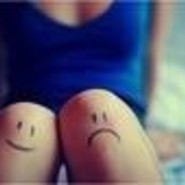Q
How big is the Proton Satria?
The Proton Satria belongs to the B-segment cars. It has a body length of 3,898 mm, a width of 1,745 mm, a height of 1,434 mm, and a wheelbase of 2,440 mm. With such a dimensional design, the interior space is quite reasonable for a five-seat layout. The relatively short body length makes it easier to maneuver on narrow city streets and when parking. The relatively wide body provides ample lateral space for the passengers inside the car, so they won't feel too cramped during the ride. The wheelbase ensures sufficient legroom for both front and rear passengers, especially the rear-seat passengers can also enjoy a decent riding experience. The fuel tank has a capacity of 50 liters, which can meet a certain range requirement. The trunk volume is 286 liters, which can meet the basic needs of storing items for daily shopping and trips.
Special Disclaimer: This content is published by users and does not represent the views or position of PCauto.
Related Q&A
Q
How much horsepower does a Satria have?
As a classic hatchback model in the Malaysian market, the horsepower output of the Satria varies depending on the specific model and year. For example, the 1.8L naturally aspirated engine in the Satria GTI can provide around 140 horsepower. The later-launched Satria Neo R3 track version can reach about 145 horsepower through tuning, while the 1.6L engine of the regular Satria Neo produces approximately 110 horsepower. It's worth noting that the horsepower data is affected by the iteration of engine technology. For instance, the early Satria used Mitsubishi's 4G series engines, and the CamPro engine independently developed by Proton later improved fuel economy and power balance.
For Malaysian consumers, when choosing a used car, they need to pay attention to the engine's maintenance status. High-mileage vehicles lacking regular maintenance may experience a decrease in horsepower. Moreover, horsepower is not the only criterion for measuring a vehicle's performance. Torque output, vehicle body lightweighting (such as the Satria's curb weight of only about 1 ton), and chassis tuning are also crucial. These factors together determine the flexible performance of this classic hot-hatch on Malaysian mountain roads or city streets.
If you want to further enhance the vehicle's power, common solutions in the local modification market include upgrading the intake and exhaust systems or reprogramming the ECU. However, these modifications must comply with JPJ regulations.
Q
What is the capacity of Satria ?
The Satria is a classic model under Proton, a Malaysian automaker. Its capacity varies depending on the specific model and version. Early Satria models like the Satria 1.3L and 1.6L were equipped with engines with displacements of 1.3 liters and 1.6 liters respectively. The high-performance version, the Satria GTI, was fitted with a 1.8-liter engine, offering more powerful output. As for the fuel tank capacity, the Satria usually holds around 45 liters, with the exact figure potentially varying slightly based on the year and configuration.
The Satria is well-loved by Malaysian consumers for its compact body and agile handling, making it particularly suitable for city driving. As one of Proton's classic models, the Satria holds an important position in the Malaysian automotive market. Although it's currently out of production, it still has a place in the local automotive culture.
For car owners who love modifications, the Satria has great potential. Many enthusiasts enhance its performance by upgrading the engine or suspension system. If you're considering buying a used Satria, it's advisable to check the vehicle's condition and maintenance records to ensure it's in good shape.
Q
What is the fuel consumption of Satria?
As a classic hatchback model in the Malaysian market, the fuel consumption of the Satria varies depending on the specific model and engine configuration. For example, the version equipped with a 1.3L engine has an average fuel consumption of about 6-7L per 100km in urban conditions, and it can drop to around 5L per 100km during highway cruising. The 1.6L version, however, consumes about 10%-15% more fuel.
Actual fuel consumption is affected by driving habits, road conditions, and maintenance status. It is recommended to regularly maintain tire pressure and air filters to optimize fuel efficiency. Malaysian car owners should pay attention to the choice between local fuels RON95 and RON97. The original-factory recommendation is to use RON95, which can meet the vehicle's requirements, and there's no need to deliberately pursue high-octane fuel.
If you're considering a used Satria, be aware that engine carbon buildup or aging oxygen sensors may lead to increased fuel consumption. Such issues can be improved through professional cleaning or component replacement. Similar models in the same class, like the Myvi or Jazz, have comparable fuel consumption. However, the Satria has an advantage in maintenance costs thanks to its lighter body and simpler mechanical structure, making it a suitable choice for young car owners on a budget.
Q
What engine is in the Proton Satria?
As a classic hatchback model of Proton, the national brand of Malaysia, the Proton Satria has been equipped with various engine configurations to meet the needs of different markets. Early models like the Satria 1.3L (1994 - 2005) were powered by a 4G13P single overhead camshaft (SOHC) 1.3-liter four-cylinder engine, with a maximum horsepower of 82 hp. The Satria 1.6L, on the other hand, used a 4G92P SOHC 1.6-liter engine, outputting 103 hp, which was suitable for daily driving needs.
In 2006, the Satria Neo was launched with an upgrade to the CamPro series of engines. The base version was equipped with a 1.3L CamPro IAFM (outputting 94 hp/120 Nm), and the performance-oriented 1.6L CamPro IAFM (110 hp/148 Nm) optimized fuel economy. It's particularly worth mentioning that the limited-edition Satria Neo R3 used a 1.6L CamPro CPS (143 hp/165 Nm), which enhanced power performance through variable valve technology.
In addition, during Proton's cooperation with Mitsubishi, the Satria GTI was introduced, equipped with a 4G93T 1.8-liter turbocharged engine (140 hp/191 Nm), becoming the performance benchmark at that time.
Regarding engine technology, the CamPro series uses an aluminum alloy cylinder block to reduce weight, and the IAFM (Intelligent Air-Fuel Management System) can automatically adjust the intake efficiency according to the engine speed. This kind of technology is particularly important for engine heat dissipation and fuel adaptability in Malaysia's hot climate. Car owners should pay attention to regularly replacing the coolant and using engine oil with the appropriate viscosity to maintain engine performance.
Q
What is the BHP of the Proton Satria?
As a classic hatchback model of Proton, Malaysia's national brand, the BHP (brake horsepower) figures of the Proton Satria vary depending on different years and engine configurations. For example, the Satria Neo launched in 2006 was equipped with a CamPro 1.6L engine that could output 110 BHP, while the high-performance version of the Satria Neo R3 achieved 145 BHP through tuning. As for the early 1990s Satria GTI (with a 1.8L 4G93 engine), it had an output of 140 BHP.
BHP, as a key indicator for measuring engine performance, directly affects a vehicle's acceleration and top-speed performance. However, the actual driving experience also needs to take into account factors such as torque, vehicle weight, and transmission matching. For instance, although the Satria Neo CPS version only has 125 BHP, thanks to the CamPro CPS technology that optimizes mid-range torque, it is more flexible in city driving.
It's worth noting that the hot climate and road conditions in Malaysia can have a certain impact on engine heat dissipation and power sustainability. It is recommended that car owners regularly maintain the cooling system and replace high-quality engine oil to maintain optimal performance. At the same time, if modification enthusiasts want to increase BHP, they need to pay attention to the JPJ regulations regarding power modifications and avoid using uncertified ECU tuning kits.
Latest Q&A
Q
Is the 2021 Arteon an improvement?
The 2021 Arteon has indeed received upgrades in several areas, making it more competitive than its predecessor. The exterior retains the sleek lines of a coupe, but the front grille and LED headlight designs are sharper. Inside, it gets a new-generation digital cockpit, featuring a standard 10.3-inch fully digital instrument cluster and a 9.2-inch central control screen. It also upgrades to the MIB3 infotainment system, supporting wireless Apple CarPlay and Android Auto, significantly enhancing the tech feel. Under the hood, it offers the proven combination of a 2.0T turbocharged engine paired with a 7-speed DSG transmission, and some markets even add a plug-in hybrid version for a balance of performance and fuel efficiency. In terms of safety, the entire lineup comes standard with the Travel Assist semi-autonomous driving assistance system, which includes lane-keeping and adaptive cruise control, meeting current mainstream demands. Notably, the introduction of the Arteon Shooting Brake expands the model range, with the trunk space increasing to 1632 liters for significantly improved practicality. This type of coupe model is gaining popularity locally, as it satisfies both design aspirations and family needs. Arteon's facelift clearly addresses these key points, especially the enhanced digital features that keep it in step with the times.
Q
What engine is in the 2021 Arteon?
The 2021 Arteon offers two turbocharged engine options across different markets. The mainstay powerplant is the 2.0-liter TSI four-cylinder gasoline engine, churning out 272 horsepower and 350 Nm of peak torque, paired with a 7-speed DSG dual-clutch transmission. This powertrain strikes a balance between performance and fuel efficiency, sprinting from 0-100km/h in just 5.8 seconds. Some markets also get the more entry-level 1.5-liter TSI EVO engine variant, featuring active cylinder management technology. It's worth noting that the model is built on Volkswagen Group's modular transverse platform (MQB), with a front-engine, front-wheel-drive layout. Higher trim levels come equipped with the 4MOTION permanent all-wheel-drive system. This powertrain setup shares technology with the Golf R but is tuned more for comfort. As the successor to the Volkswagen CC, the Arteon's EA888 series engine has been re-optimized, incorporating advanced technologies like a dual-injection system and an integrated cylinder head. It's recommended to use 95 octane or higher gasoline for optimal performance, and regular maintenance is suggested every 15,000 kilometers or 12 months, whichever comes first.
Q
What is the difference between 2021 and 2022 Arteon?
The main differences between the 2021 and 2022 Arteon lie in upgraded features and detailed refinements, with the 2022 model stepping up its tech game and driver assistance capabilities. The 2022 Arteon comes standard with the new-generation infotainment system, boasting faster screen response and wireless Apple CarPlay and Android Auto support – features that were optional on some 2021 trims. On the safety front, the 2022 model adds Travel Assist, which combines adaptive cruise control and lane-keeping assist for easier long drives, while some variants also get a 360-degree camera. Externally, new wheel designs are on offer for 2022, and there are minor tweaks to interior materials, like more exquisite seat stitching craftsmanship is even more refined. Under the hood, things stay the same – both model years still offer the 1.5T and 2.0T engine options. It’s worth noting that these annual updates usually don’t mess with core components; instead, they boost competitiveness by adding previously optional features as standard or refining interfaces. When shopping, keep an eye on dealer discounts for leftover 2021 stock – sometimes you can score a better value that way. Also, the used car retention value between these annual refresh models typically isn’t huge; it mostly depends on specific features and overall condition.
Q
How much is a 2021 Arteon worth?
The 2021 Arteon is currently fetching around RM150,000 to RM200,000 on the used car market, with prices varying based on condition, mileage, trim level, and whether it's still under the original factory warranty. As Volkswagen's flagship coupe, the Arteon stands out with its sleek frameless doors, a 2.0TSI turbo engine pumping out around 280 horsepower, and a digital cockpit. Higher-spec models might also come with the 4MOTION all-wheel-drive system and DCC adaptive chassis. It’s worth noting that German cars like this tend to have slightly higher maintenance costs than their Japanese counterparts, but the factory-backed 5-year unlimited mileage warranty (if still valid) can really cut down on long-term ownership expenses. If you’re considering a used Arteon, it’s smart to prioritize certified pre-owned units or those with complete service records. Also, check the maintenance history of the EA888 engine and the transmission fluid change records for the 7-speed DSG (which is most common). In the same price range, you could also look at the BMW 4 Series Gran Coupe or Mercedes-Benz CLA Shooting Brake from the same year, but the Arteon has the edge when it comes to space and practicality—perfect for buyers who want both style and functionality.
Q
Is a 2021 Volkswagen Arteon a good car?
The 2021 Volkswagen Arteon is a solid all-around performer. It boasts an elegant coupe-like design, a roomy interior, and a refined powertrain. Under the hood, you'll find a 2.0-liter turbocharged engine that delivers plenty of power and a relatively smooth driving experience, making it suitable for both daily commuting and long road trips. Inside, the Arteon features high-quality materials and a generous array of tech, including a digital gauge cluster and a large infotainment screen. It also supports advanced driver assistance features, which boost both safety and convenience. However, its fuel economy might not stack up as well against some Japanese rivals, and maintenance costs are a bit on the higher side—typical traits for German cars. If you value sleek design and driving dynamics, the Arteon is definitely worth a look. But if fuel efficiency is your top priority, you might want to cross-shop comparable Japanese or Korean models. Also, if you're considering a used Arteon, make sure to check the service records and overall condition to avoid potential issues. German cars tend to have more complex electronic systems, so regular maintenance is crucial.
View MoreRelated News

The all-new Proton X50 has sold over 6,000 units in a month and a half since its launch, becoming the champion in its segment.
RobertSep 18, 2025

Malaysia's automobile industry has made remarkable progress and will further deepen cooperation with China in the future
AshleySep 18, 2025

Proton's sales in August reached 15,300 units, an 8% year-over-year increase.
WilliamSep 17, 2025

The fifth-generation Geely Emgrand car photos released, with upgrades in body size and power system
WilliamSep 16, 2025

Perodua Myvi's competitor Proton Iriz officially discontinued, ending its 11-year sales journey
JohnSep 11, 2025
View More













Pros
Cons